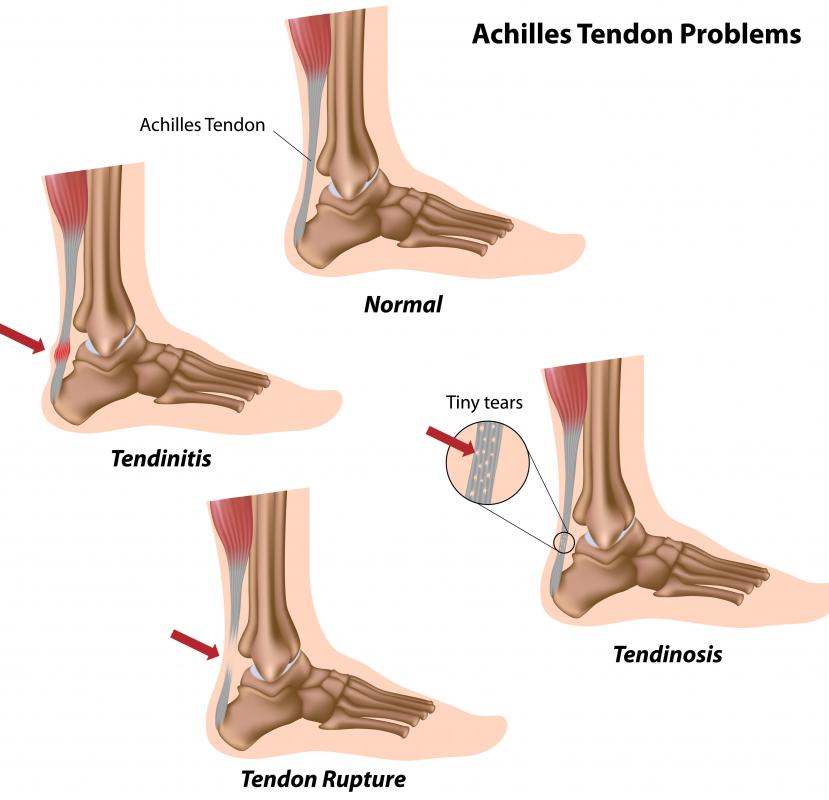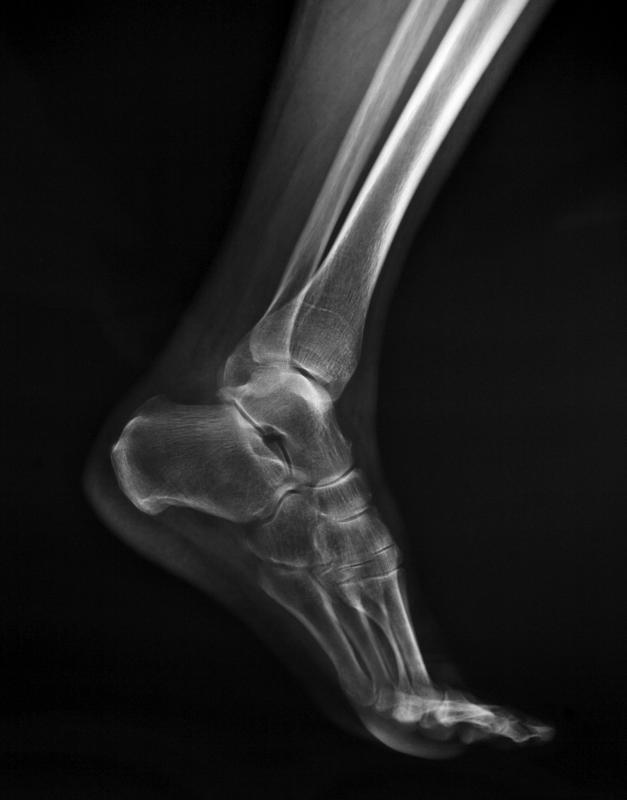At TheHealthBoard, we're committed to delivering accurate, trustworthy information. Our expert-authored content is rigorously fact-checked and sourced from credible authorities. Discover how we uphold the highest standards in providing you with reliable knowledge.
What are the Most Common Types of Heel Injury?
A heel injury may be attributed to a wide variety of factors. Repetitive stress, excessive physical activity, or weight placed on the heel may cause an injury. Heel pain may be a result of injuries sustained to muscles, ligaments, and bones throughout the heel and foot. Injuries to the heel may have generalized symptoms such as numbness, tingling, tenderness, swelling, and localized pain. Some of the most common types of heel injuries include a heel spur, plantar fasciitis, heel fractures, and an Achilles tendon rupture.
Heel spurs are one of the most common heel injuries. They are generally defined as bony growths extending from the heel bone. The protrusions can usually be seen on X-ray. Pain may result if the growth extends from the heel bone into the tissues surrounding the heel. This condition may result from jogging, a running injury, or from improperly fitted shoes.

Plantar fasciitis is another type of heel injury. Running across the bottom of the foot is a thick band of tissue known as the plantar fascia. If this tissue becomes inflamed, plantar fasciitis can result. This can occur from too much stress on the heel. Swelling, bruising, and heel and foot pain are some common symptoms of this condition.
Fractures are another way the heel can be injured. A heel may become fractured in a variety of ways, including through a fall or motor vehicle accident. The most prominent symptoms of a heel fracture are usually the inability to bear weight on the heel and pain in the area. If a fracture is present, the entire foot may become stiff and swollen. X-rays of the heel and ankle are often used to diagnose a heel fracture.

An Achilles tendon rupture is a type of heel injury that can result if the tendon, a thick band of tissue, at the back of the heel is torn. This injury may happen due to a great fall, bad stumble, or forceful push off of the foot. Any activity causing overstretching of the Achilles tendon may cause a rupture. Surgery may be required for this injury.

Media plantar nerve entrapment is an injury that may result from a nerve in the inner heel being compressed. Constant pain is the most common symptom. The pain may be so severe that standing may become difficult. A foot device, such as a splint, may be used for this type of heel injury.
A calcaneal fat pad injury may result from disruption or damage done to the calcaneal, or heel, fat pad. Fatty tissues make up the pad, and its purpose is to cushion the heel bone and to absorb shock. Aching and localized pain in the heel are some common symptoms of injury to this tissue. Walking barefoot and applying pressure to the heel may exaggerate the symptoms.

There are some steps that may be taken to avoid injuring the heel. Some ways to avoid injuries include wearing shoes that fit properly, avoiding walking surfaces that are uneven, and preparing for exercising or physical activities by stretching. Other tips include wearing the proper shoes for a given activity, resisting the urge to wear shoes with worn out soles and heels, and not walking barefoot on hard surfaces.
If heel pain is severe and persistent, it may be necessary to consult with a doctor. Heel injuries left unattended may lead to other problems, including ligament tears or ruptures, muscle weakness, and scar tissue buildup. A doctor can properly diagnose the injury and provide the best method of treatment.
AS FEATURED ON:
AS FEATURED ON:














Discussion Comments
@GiraffeEars: Any luck? I'm facing the same problem. I could walk, enjoy life but now at 49 my life is over. It's been four months and I've tried everything., including lots of whole day and week rest, stretching, etc. Nothing works.
@giraffeEars- I am not sure if this applies to you, but a general treatment for lingering pain from plantar fasciitis is to lose weight and buy supportive shoes. Plantar fasciitis is one of the most common sources of heel pain in the foot, and often times, weight is part of the problem.
I used to work in a kitchen, so I put on a few unwanted pounds. I noticed that when I was a little overweight I had more injuries and minor health problems, including plantar fasciitis. I lost about twenty-five pounds, got back into shape, and I have felt better since. My doctor told me that losing some weight would help my foot injury, and make me feel better all around.
I have plantar fasciitis and I am wondering what I can do to help heal the ligament that is the source of my foot and heel injury. I got the injury playing basketball. My plantar fasciitis has become a nagging injury and will not heal. Does anyone have any recommendations?
Post your comments